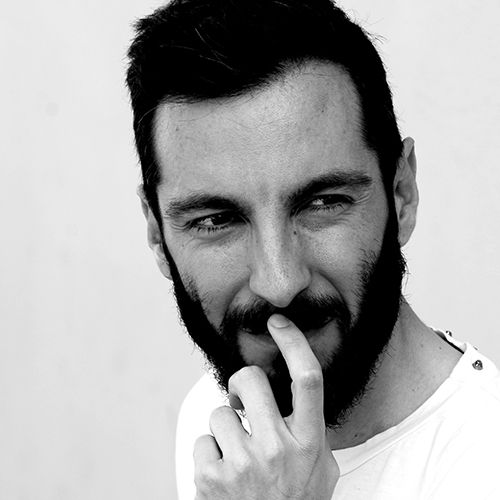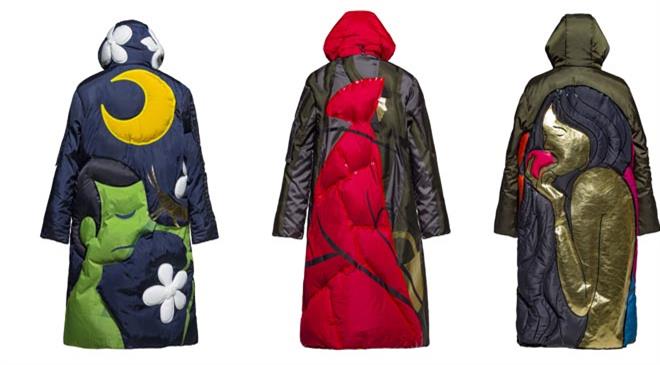
Tiziano Guardini
Designer
Label - Tiziano Guardini
Wear something that makes you smile
Italy-based eponymous label by the designer Tiziano Guardini who loves fashion combined with nature – two anti-ethical contexts but in perfect harmony in his creations. He has been repeatedly cited by fashion magazines and newspapers like the NYTimes, Vogue, and Corriere della Sera who called him the “Designer of Nature”. In an interview with Fibre2Fashion, the designer talks about his latest collection, walks us through the design process, and suggests some style tips to slay a basic day.
Fibre2Fashion: What attracted you towards the fashion industry and what motivated you to start your eponymous label?
Tiziano Guardini:
I don’t know how it came about exactly but when I was a teenager, I found myself with a pad of blank sheets of paper, a pencil, and listening to my favourite compilation I started drawing entire collections. Being a fashion designer is something instinctual for me. Just like an old wise man, I found acceptance in my feeling of creating garments that are the pathway to reconnecting ourselves with nature. As long as we need to awaken to this ‘we are nature’ I will continue to design and create garments to reconnect us.
F2F: How would you define the aesthetic and vibe of your collection?
TG:
We work on different aspects, both aesthetic and process/material.
F2F: Where do you get your creative nutrition from and what fashion do you follow?
TG:
It depends. I can’t give a formula that I pursue. My work as a designer is somewhere between creative and inspirational work. The sum of several emotions is the result you see.
F2F: It depends. I can’t give a formula that I pursue. My work as a designer is somewhere between creative and inspirational work. The sum of several emotions is the result you see.
TG:
We don’t have much time for the whole process. I say this because it is a long path and sometimes it is made up of endless repetitions until you find the shape, the colour, the texture, the reflection of light on the fabric, the size of the pattern, etc that is in ‘harmony’.
F2F: Since you are known as “designer of nature”, how do you ensure sustainability in your creations?
TG:
It is a very serious and meticulous process. The basis is the respect for life in the broadest sense and the constant listening to nature. I am honing this relationship with nature a lot and I like the formula ‘learning from nature and designing as nature’.
F2F: With so many sustainable brands coming into the picture, what makes your label stand out?
TG:
When I started having this approach of respecting life in nature, the term ‘sustainable’ had an extremely sad concept. For me, sustainability (or respect for life) is an undisputed value that does not have to take anything away from the creative aspect, but rather it should add value.
F2F: Sustainable pieces come with a price. What is your comment?
TG:
It depends. Some materials such as ahimsa silk is much more expensive than conventional silk. In other cases, the difference is minimal like with regenerated nylon, and we are often used to seeing increased costs, but these are more a result of marketing aspects than a real mark-up for the cost of the raw material.
F2F: Which celebrity slay in your collection the best?
TG:
I would talk about people instead of celebrities, and I would say those who perceive their value. In chronological order they are Elisa Toffoli and Margot Sikabonyi.
F2F: Can you suggest five styling tips to slay a basic day
TG:
- A scented flower in your hair to smell every now and then.
- Wear something that makes you smile because happiness, like joy, is something we have to learn to practice throughout the day.
- Knotting, or creatively buttoning our T-shirt or shirt to remind us that we are free to create new rules and that we are living beings who build and not destroy.
- The smile because as the Buddhist master Daisaku Ikeda says “the smile is not the result but the cause of happiness”.
- Anything by Tiziano Guardini... can I say it? Hah hah!
F2F: Who is your style icon?
TG:
He doesn’t have a name. There are people who inspire me for certain aspects, for a certain character or physicality or for the way they walk or the work they do or the strength of their smile... It’s a mix of many style icons from Tilda Swinton to Beyonce, via Eleonora Abbagnato, Elaine Welteroth and my mother. That’s actually the hardest question you’ve asked me.

Bill D’Arienzo
Rahul Mehta
Arun Sirdeshmukh
Pradip Mehta
Abhay Gupta
Anurag Batra
Fanny Vermandel
Rahul Mehta
Aseem Prakash
Gabi Seligsohn








_8.JPG)


